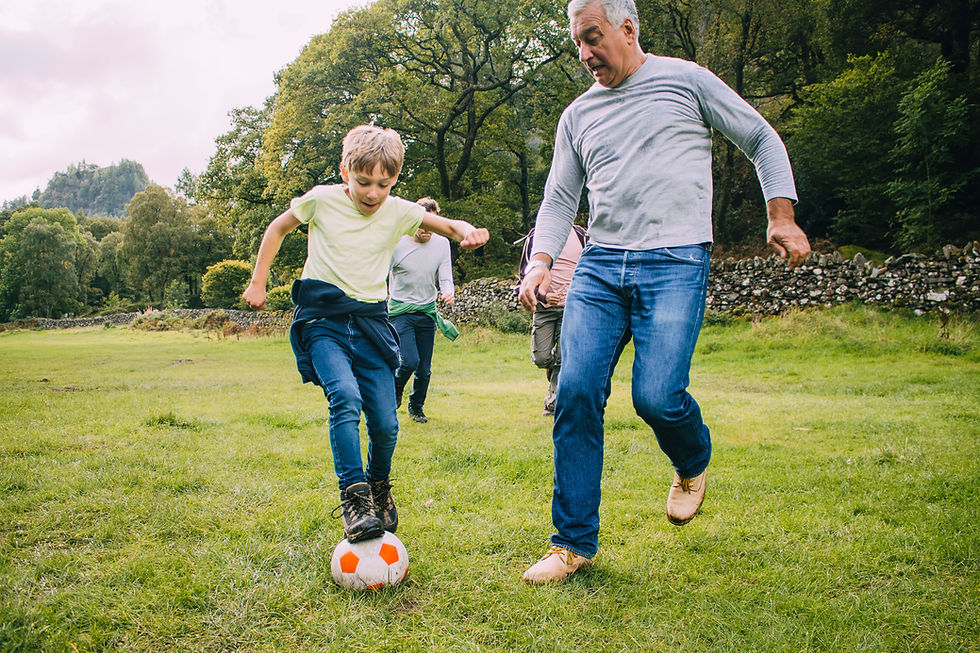Multiple Sclerosis and Exercise
- Julie Manley

- May 7, 2017
- 2 min read

Multiple sclerosis (MS) is a chronic progressive disease of the central nervous system, affecting over 2.5 million people worldwide, which causes various symptoms such as fatigue, pain, spasticity, memory problems, and mobility impairments. Until about 20 years ago, it was believed that symptoms of MS would worsen with physical exertion and people were encouraged to limit their physical activity.
That belief is no more! Evidence is showing that physical activity and exercise is safe for people with MS and helps ward off some of the disability that occurs in the disease due to secondary deconditioning from the sedentary lifestyle that tends to ensue after diagnosis. Inactivity in MS isn’t necessarily due to lack of interest but its own set of unique barriers, including:
Fatigue, which is often the first symptoms of MS
Impaired mobility, specifically the ability to safely and independently walk
Pain
Heat sensitivity and Uthtoff’s Sign, causing a significant increase in symptoms with physical exertion and warm environments
The good thing is, studies have been shown that slowly increasing daily physical activity – activities that get you moving like cleaning, yard work, cooking, etc – and participating in regular exercise is not only safe, but can improve some aspects of health and function in people with MS. Having trouble getting started or don’t know where to start? Physiotherapists can help adapt physical interventions that are appropriate, safe and effective for people with MS and help with managing concerns related to fatigue, heat intolerance and other impairments.
For now, here are some starter tips:
Start increasing your walking tolerance at the mall. The mall is a cool environment with many places to sit that offers a flat walking ground that makes using adaptive equipment a little easier (i.e., walker, cane).
Time your exercise. Don’t wait for the heat of the day (between 11am and 3pm) to do your exercise, do it earlier in the morning, or at night when things are a little cooler.
Start small. Anything is better than nothing. Try hitting 3 bouts of 10 minutes (or working up to the 10 minutes) of walking with good breaks in between, allowing yourself to cool off.
Like to use a treadmill? Play around with a speed that will allow you to get 10 minutes of walking before heat sensitivity sets in. But make sure that after a couple week you’re pushing your time or speed to prevent a plateau and ensure you’re still getting your heart rate up.
Wear light clothing that will allow your skin to breath. Heavy sweaters and pants will increase your body temperature quicker.
Come see us! We can start you on a program for the clinic, gym or for home.




Using herbal natural remedy was what got me tested negative to HSV 2 after being diagnosed for years. I have spent so much funds on medications like acyclovir (Zovirax), Famciclovir (Famvir), and Valacyclovir (Valtrex). But it was all a waste of time and my symptoms got worse. To me It is very bad what Big pharma are doing, why keep making humans suffer greatly just to get profits annually for medications that don't work. I'm glad that herbal remedies are gaining so much awareness and many people are getting off medications and activating their entire body system with natural herbal remedies and they have become holistically healed totally, It’s also crucial to learn as much as you can about your…
After an MRI i was diagnosed of MULTIPLE SCLEROSIS. After years on medications, symptoms worsened with tremors on my right hand, numbness and tingling, muscle weakness and loss of speech. Fortunately last year, i learnt about Health Herbs Clinic and their Multiple Sclerosis alternative treatment ( ww w. healthherbsclinic. com ), the Multiple Sclerosis treatment made a great difference, most of my symptoms including tremors, weakness and others gradually disappeared. I improved greatly over the 6 months treatment, its been a years since the treatment, i have no symptoms. I have a very good quality of life and a supportive family!
I was diagnosed 2010. i was diagnosed with Multiple sclerosis. My symptoms progressed quickly. Soon i was having Pain and spasms, Vision problems and even numbness and severe Fatigue. With the help of Kycuyu Health Clinic natural herbs I have been able to reverse my symptoms using diet, herbs, which i feel has made the most difference. The (MS) natural formula immensely helped my condition, it reversed my Multiple sclerosis. my Balance problems and dizziness, my Vision problems and mobility. gradually disappeared. Visit KYCUYU HEALTH CLINIC via their official web-site www. Kycuyuhealthclinic .com i am glad to get my life back DON’T GIVE UP HOPE!!!
I started using multiple sclerosis (MS) herbal remedy i purchased from Kykuyu Health Clinic January this year. I only used it for a month and two weeks, my condition changed automatically, all my symptoms are gone. Remaining positive have helped me during this treatment. Now am living MS FREE. Hope this will help somebody, remember, do your own research and make your own decisions based on information you have received and digested. Thanks to Kykuyu Health Clinic for their amazing work. Forever Grateful! Contact them via www .kykuyuhealthclinic. com